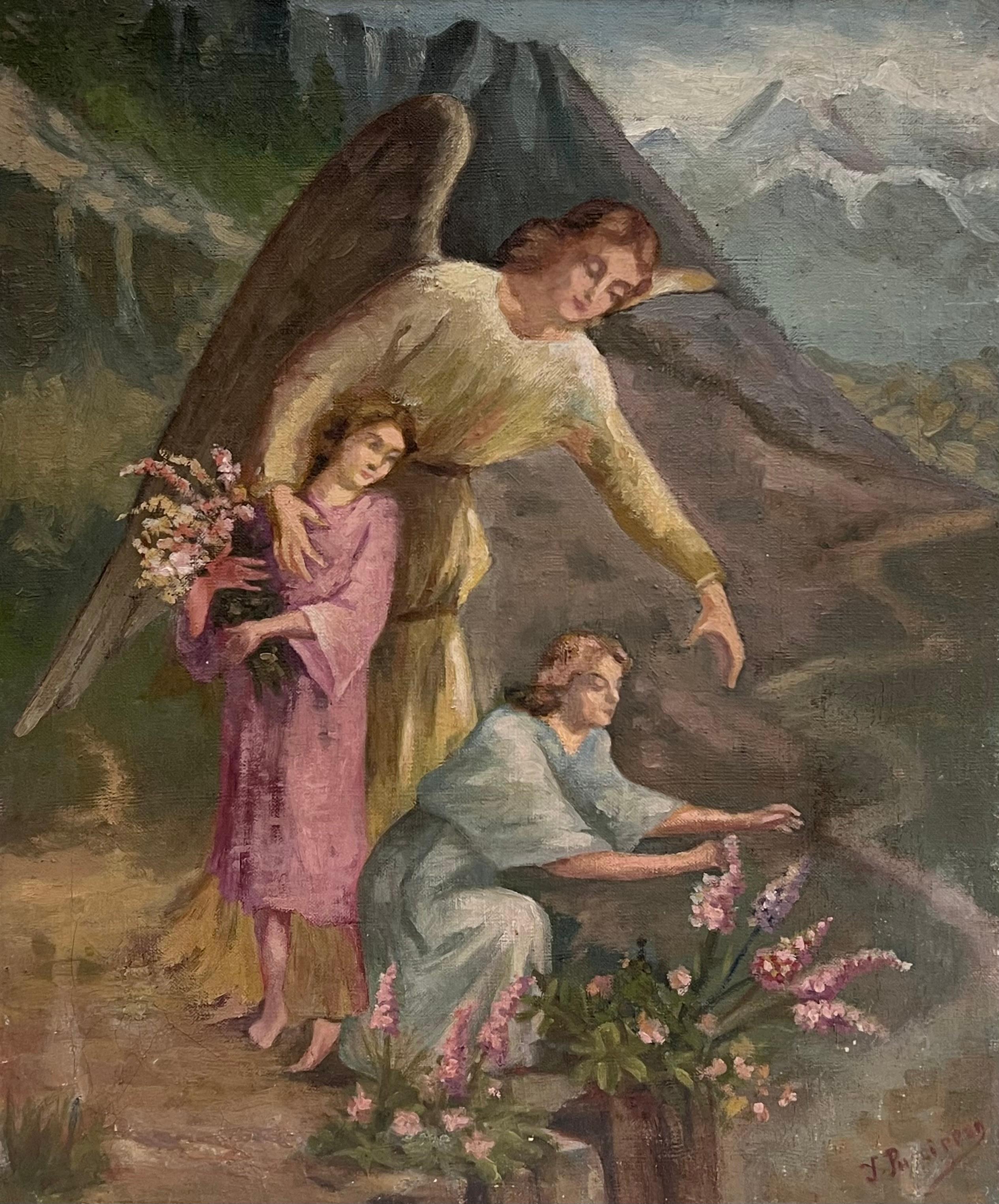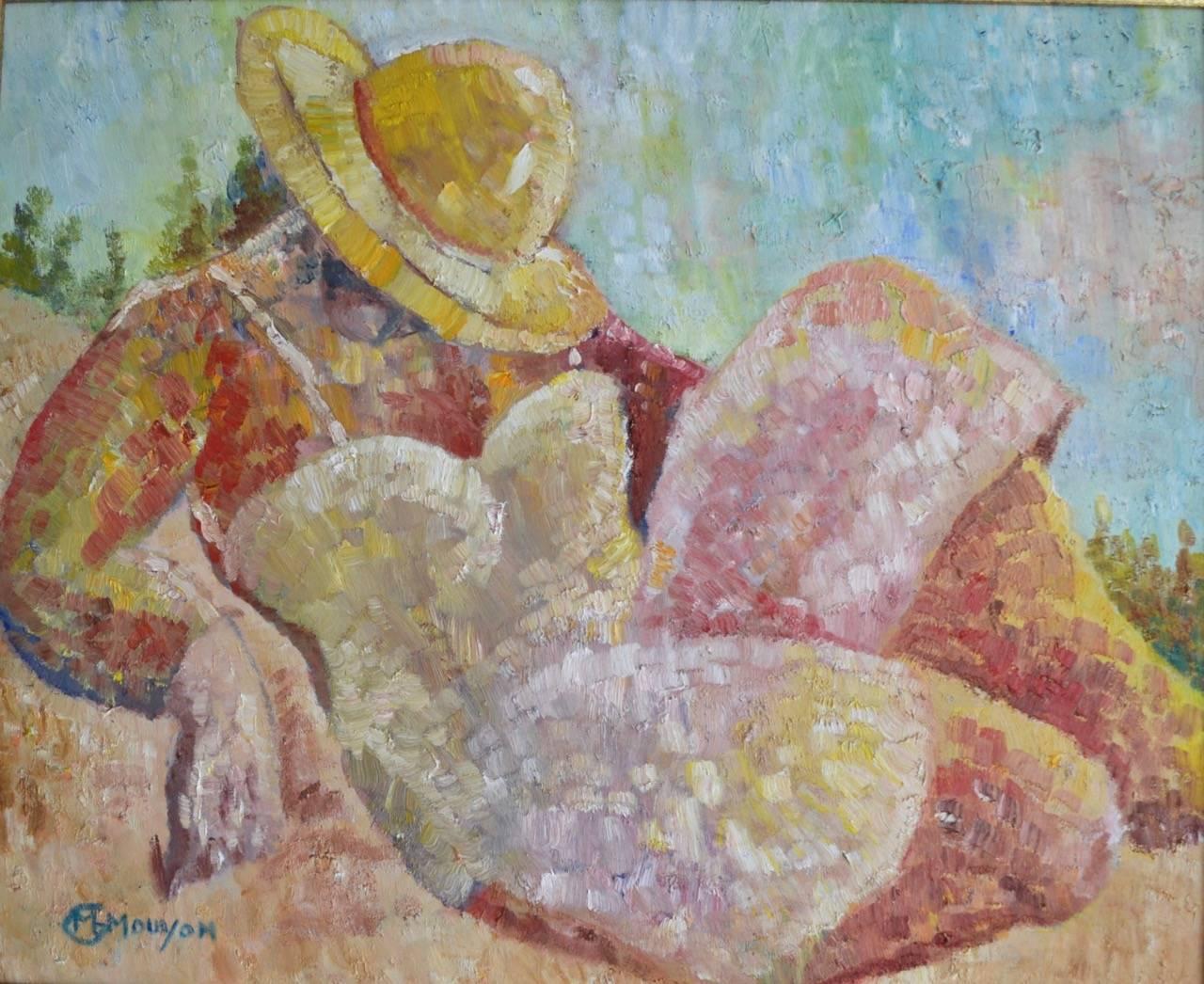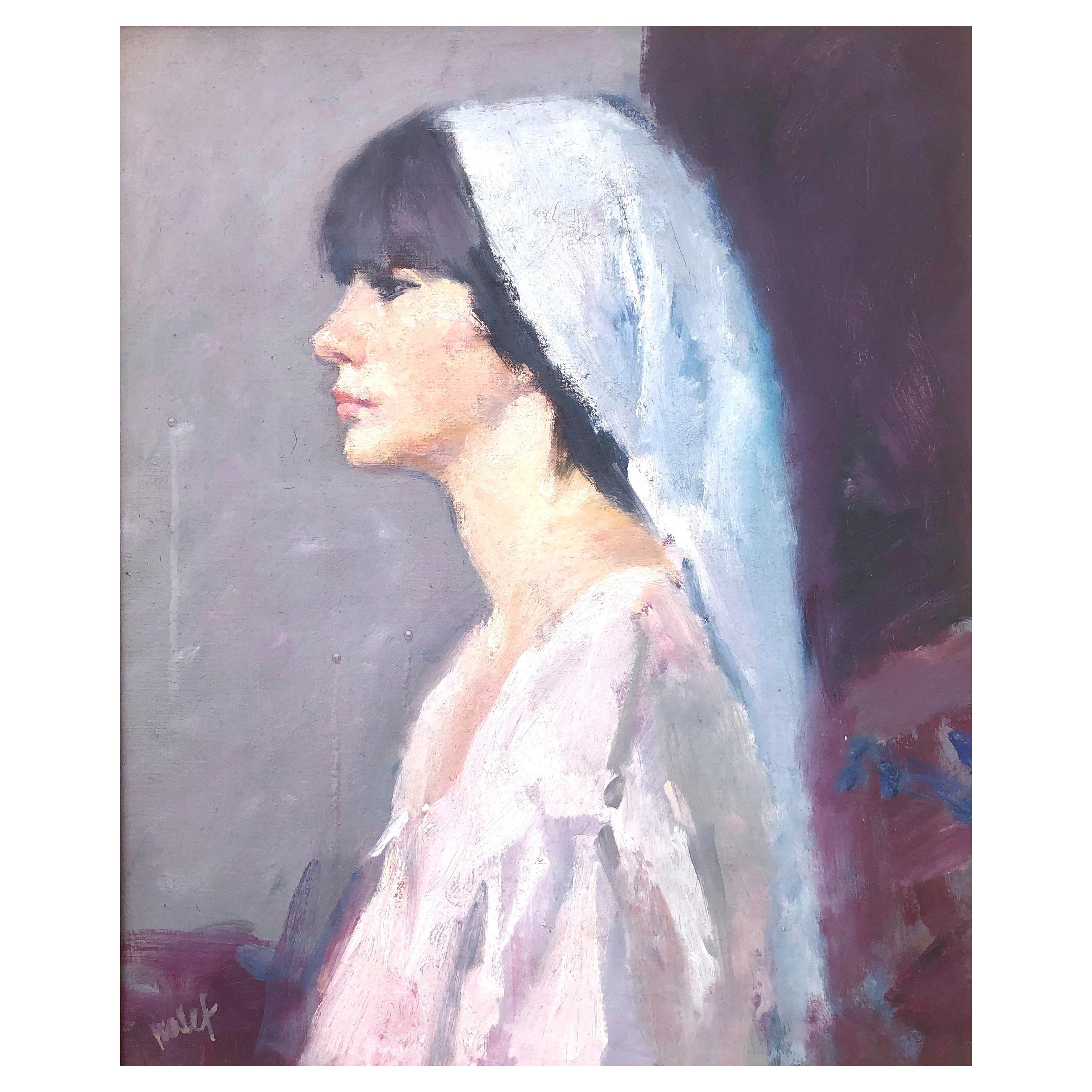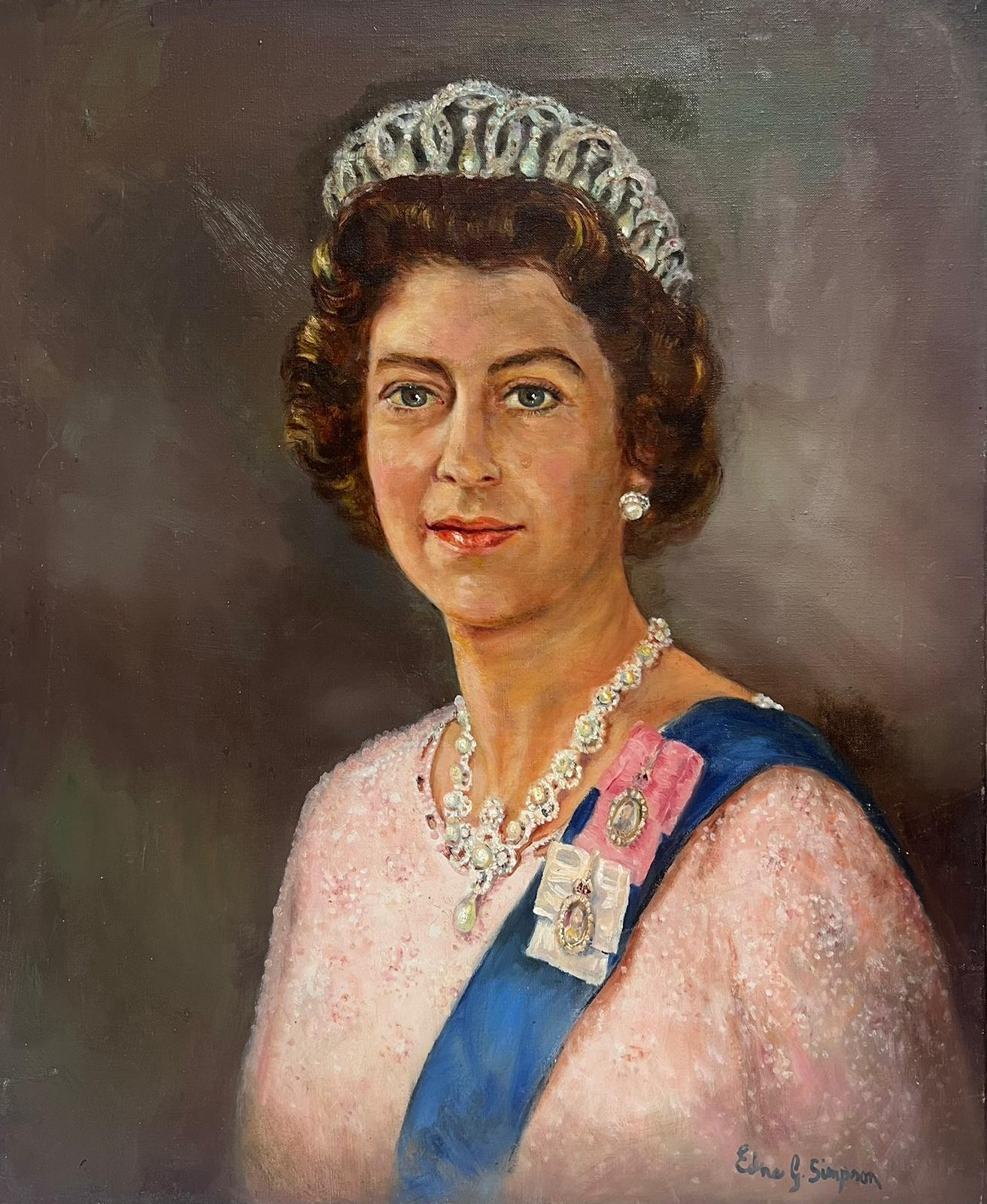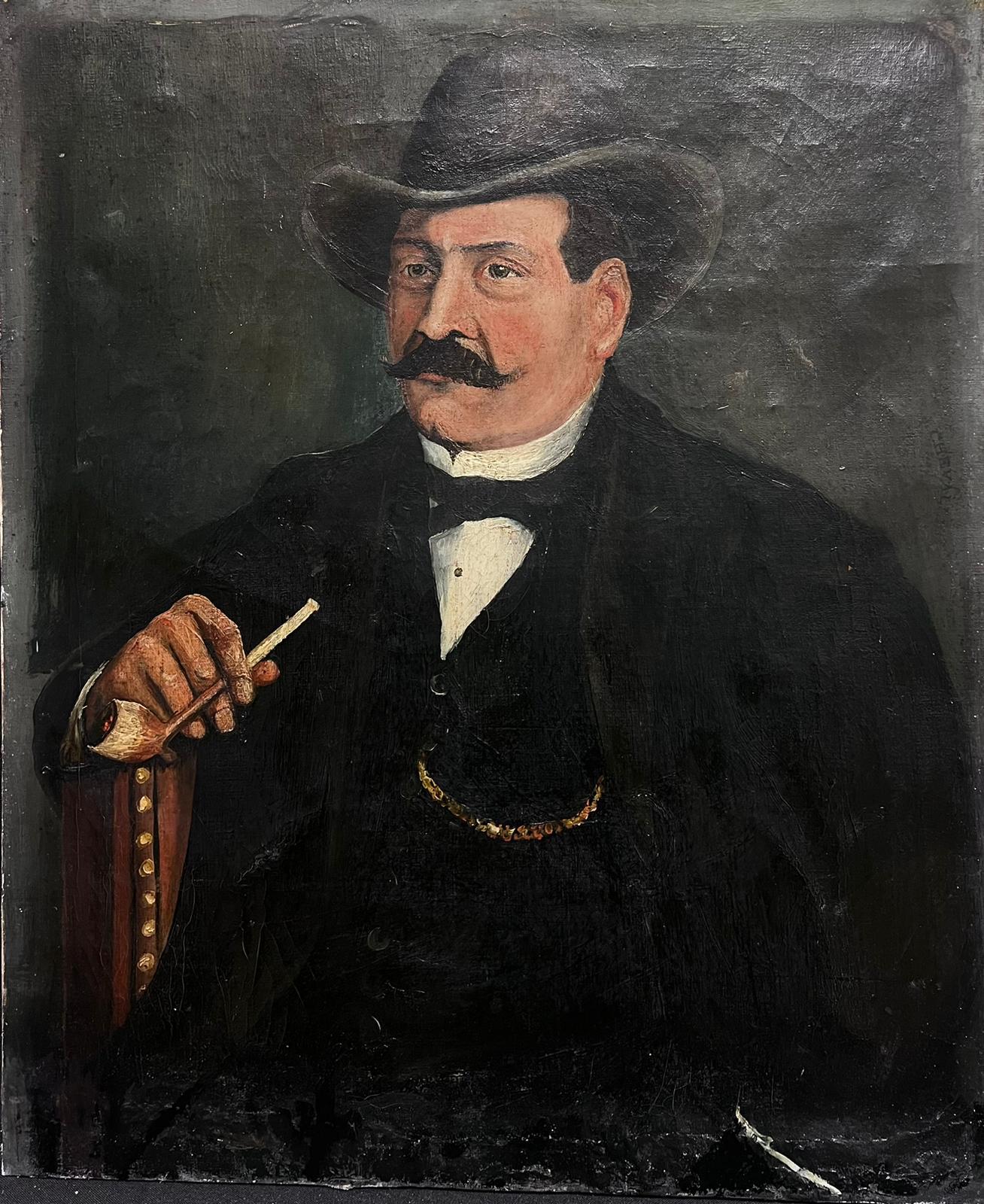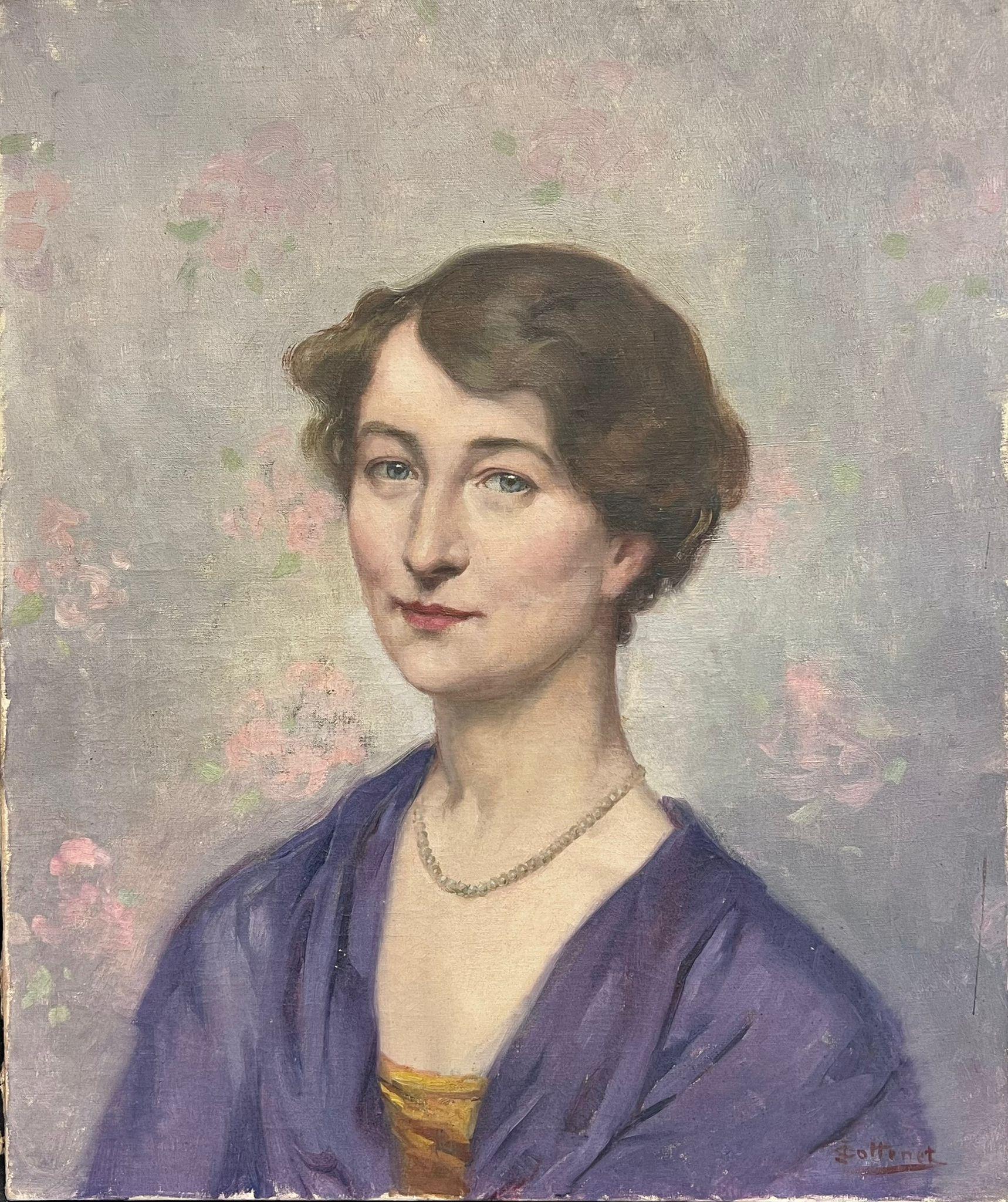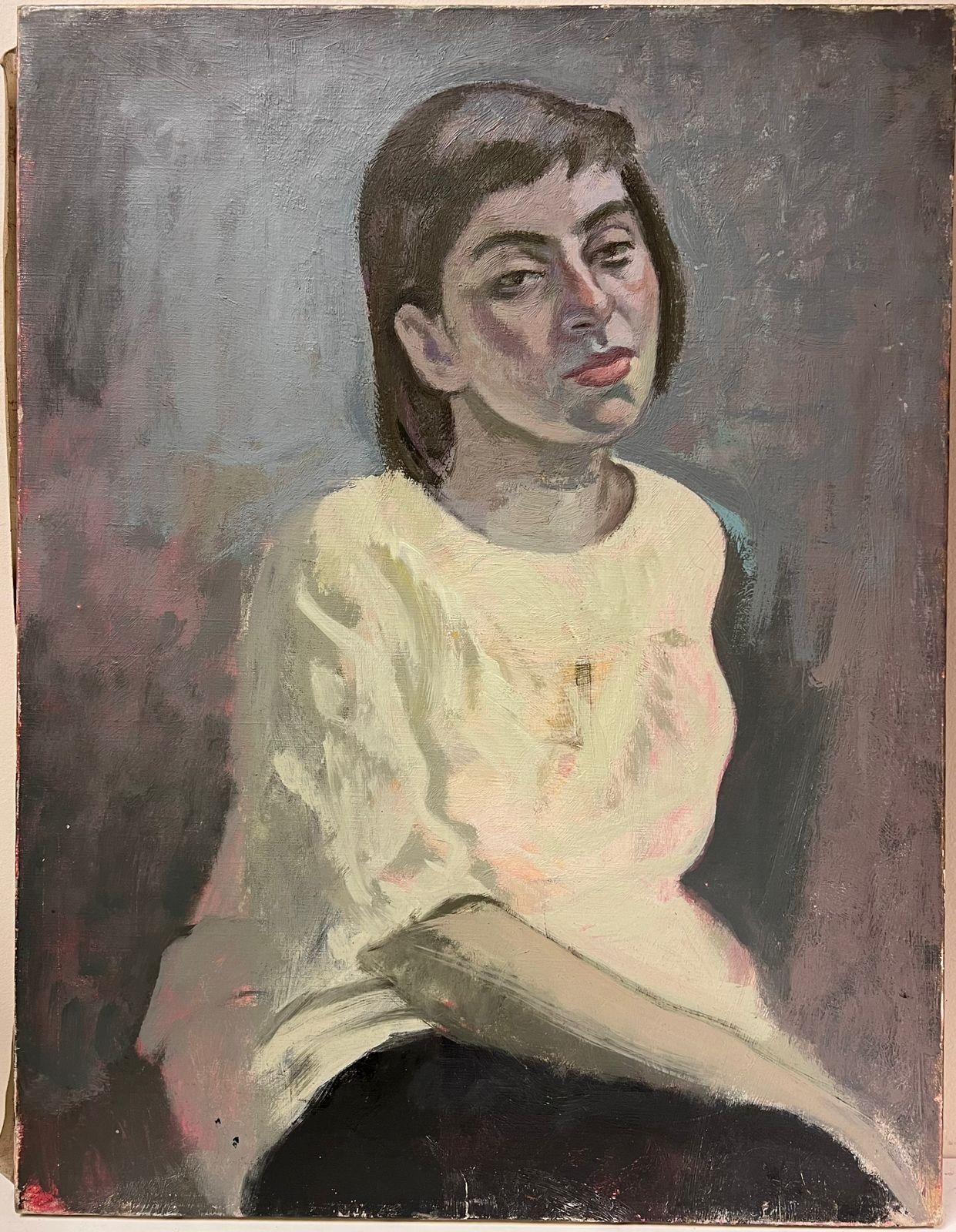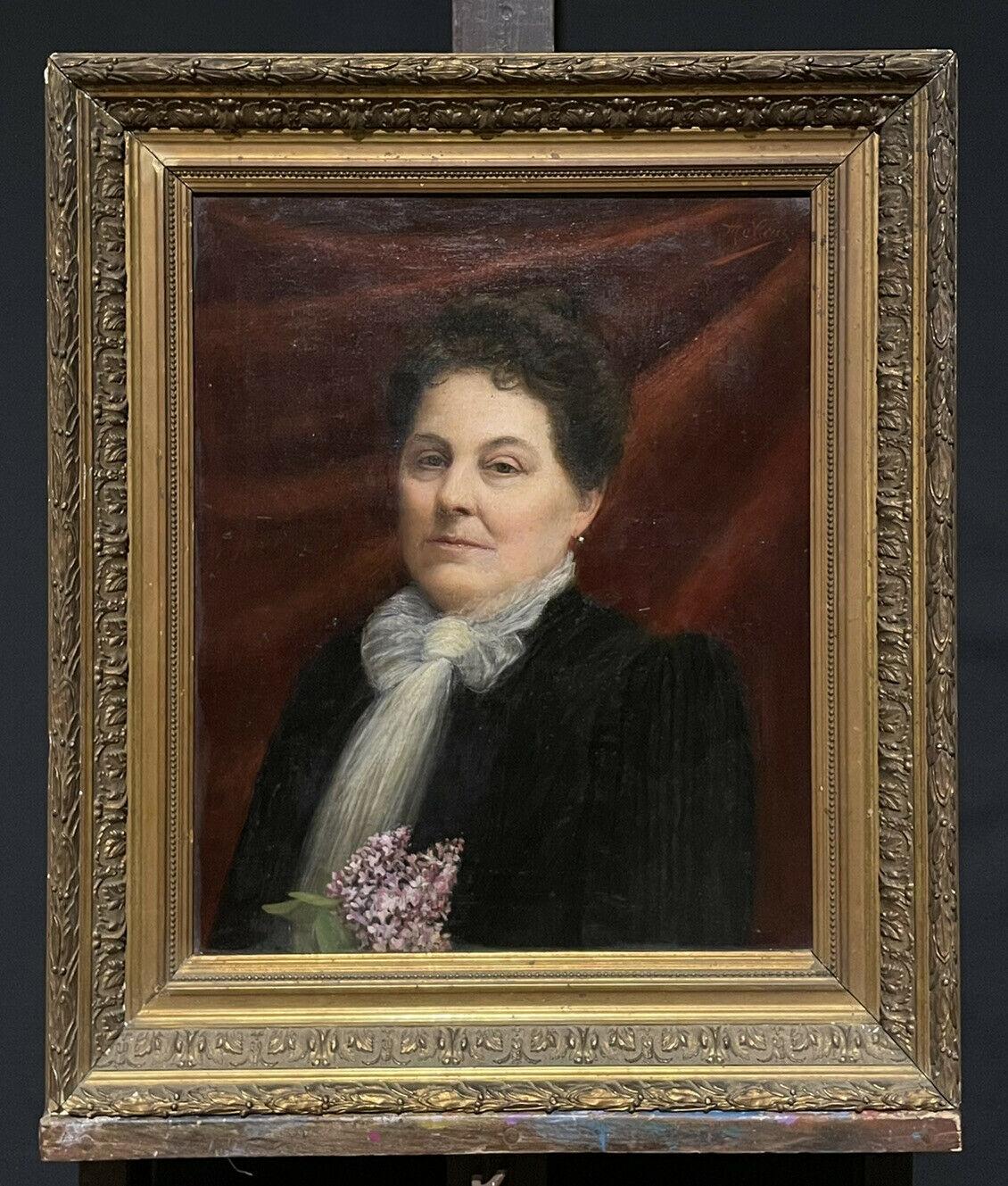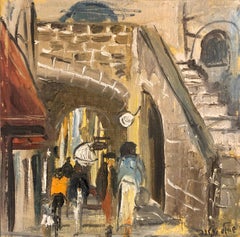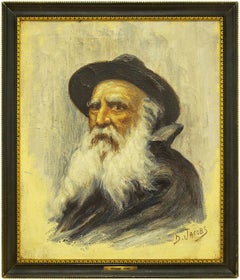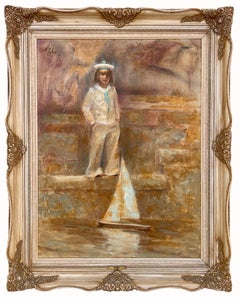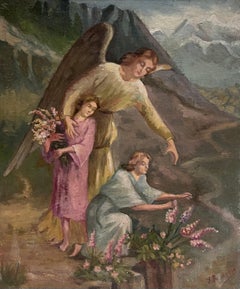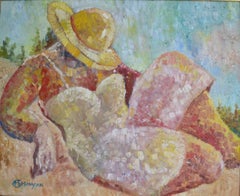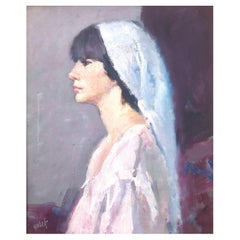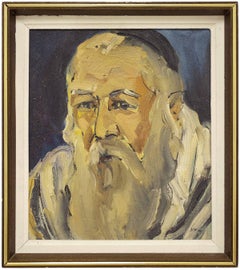
Israeli Judaica Oil Painting, Holy Man Portrait
View Similar Items
Want more images or videos?
Request additional images or videos from the seller
1 of 7
Shaul VictorIsraeli Judaica Oil Painting, Holy Man Portrait
$1,800List Price
About the Item
- Creator:Shaul Victor (1947, American)
- Dimensions:Height: 13.5 in (34.29 cm)Width: 12 in (30.48 cm)
- Medium:
- Movement & Style:
- Period:
- Condition:Measurements include frame.
- Gallery Location:Surfside, FL
- Reference Number:1stDibs: LU3821951403
About the Seller
4.9
Platinum Seller
Premium sellers with a 4.7+ rating and 24-hour response times
Established in 1995
1stDibs seller since 2014
1,782 sales on 1stDibs
Authenticity Guarantee
In the unlikely event there’s an issue with an item’s authenticity, contact us within 1 year for a full refund. DetailsMoney-Back Guarantee
If your item is not as described, is damaged in transit, or does not arrive, contact us within 7 days for a full refund. Details24-Hour Cancellation
You have a 24-hour grace period in which to reconsider your purchase, with no questions asked.Vetted Professional Sellers
Our world-class sellers must adhere to strict standards for service and quality, maintaining the integrity of our listings.Price-Match Guarantee
If you find that a seller listed the same item for a lower price elsewhere, we’ll match it.Trusted Global Delivery
Our best-in-class carrier network provides specialized shipping options worldwide, including custom delivery.More From This Seller
View AllIsraeli Judaica Oil Painting, Street Scene Jerusalem or Safed
By Shaul Victor
Located in Surfside, FL
Shaul Victor, (1947-2016), Russian American Israeli artist, paints vivid Judaica/Israel scenes and portraits.
Shaul Victor, painter. Born in Russia in 1947, immigrated to Israel in ...
Category
20th Century Impressionist Portrait Paintings
Materials
Canvas, Oil
Israeli Judaica Oil Painting, Holy Man Portrait
By Shaul Victor
Located in Surfside, FL
Shaul Victor, (1947-2016), Russian American Israeli artist, paints vivid Judaica/Israel scenes and portraits.
Shaul Victor, painter. Born in Russia in 1947, immigrated to Israel in the early 70's and lived in Safed. He became Orthodox religious.
Shaul Victor graduated from the Academy of Art in Kiev, where he studied between 1967-1973. Immigrated to Israel from the USSR with his wife and children in 1973 after having conflicts and difficulties with the Soviet authorities.
He was accepted as a member to the Israel Painters and Sculptors Association and received a studio and a small gallery in the Artists' Colony in Safed, where he worked for many years. He became a prominent painter among the artists of Safed and received great respect and favorable reviews in the leading Israeli newspapers.
He was also chosen to appear on the Israeli TV (the only channel in the 1980s) about art in Safed.
Select solo exhibitions:
1974 Safed and Bezalel, Jerusalem (Portraits Exhibition).
1976 Smith Gallery London.
1977 Edelstein House, Kiryat Shmona.
Shaul Victor participated in group exhibitions in the Artists' Quarter Gallery in Safed, Tel Aviv, Jerusalem, in the Chai Gallery, Chabad Chassidic Art Institute in Brooklyn, and in other art galleries in Brooklyn. Shaul Victor is one of the artists championed by the Chai Gallery in Crown Heights, Brooklyn New York, they have represented all of the major Lubavitch Hasidic artists such as Baruch Nachshon, Hendel Lieberman...
Category
20th Century Impressionist Portrait Paintings
Materials
Canvas, Oil
Portrait of a Rabbi, Belgian Impressionist Painting
By Dieudonne Jacobs
Located in Surfside, FL
Dieudonne Jacobs ( 1887 - 1967 ), an impressionist painter from Liège spent his life as an artist between the Belgian Ardennes and the French Riviera, especially between Spa and La Garde ( Toulon ).
He enrolled at the Royal Academy of Fine Arts in Liège, and was a part of great contemporaries, Richard Heintz , Ludovic Janssen , Joseph Bonvoisin , Emmanuel Meuris , Albert Raty...
Category
Early 20th Century Impressionist Portrait Paintings
Materials
Canvas, Oil
Large American Impressionist Painting Sailor Girl with Toy Boat Richard Zolan
By Richard Judson Zolan
Located in Surfside, FL
Richard Judson Zolan (1931-2001)
"Be Calm"
A sailor girl (or sailor boy) with a toy boat in a pond.
Oil painting on canvas, hand signed upper left,
Dimensions 40 x 30”, framed to...
Category
20th Century American Impressionist Figurative Paintings
Materials
Oil
Rare Unique Oil Painting Silkscreen of Fabio Pop Art 80s Icon
By Steve Kaufman
Located in Surfside, FL
Rare one of a kind Pop Art portrait painting of 80s and 90s pop icon Fabio done in silkscreen enamel oil on canvas. this is not numbered and is believed to be unique.
Steven Alan Kaufman Or Steve Kaufman, 1960–2010 American pop artist, filmmaker, photographer and humanitarian.In 1975, Kaufman participated in a group graffiti Street Art show at the prestigious Whitney Museum of American Art.Kaufman participated with nine other New York City students in a cultural art exchange with students in Japan, resulting in his attaining a scholarship to the Parsons School of Design. As a teenager Kaufman was going to Studio 54 and associating with people from the 1970s New York City art community. Kaufman attended Manhattan's School of Visual Arts (SVA), where he met contemporary artists such as Jean-Michel Basquiat. In 1981 Kaufman met Andy Warhol, who became a significant influence on the 19-year-old Kaufman, who worked as Warhohl's assistant at his studio, The Factory, producing original paintings and silkscreens. Kaufman designed theme parties for various nightclubs, sold his paintings to Calvin Klein and Steve Rubell, and participated in a group art show with pop artist Keith Haring, whom he had met at the SVA. Kaufman created the graphics for NBC's Saturday Night Live. Kaufman graduated from SVA with a Bachelor of Fine Arts degree and held art shows in London. Leaving Warhol's Factory, Kaufman established his own SAK Studio, hiring homeless New Yorkers to assist him. He painted portraits of three homeless persons for Transportation Display, Inc. that where later shown in 46 cities on bus billboards, helping to raise $4.72 million to benefit the homeless. Kaufman crated the first “Racial Harmony” mural in Harlem to raise attention of inner-city problems. He showed at the White Gallery as a tribute to those who died from AIDS. The “Say Without Art” tribute was based on this show. Kaufman also exhibited his works at the Loft Gallery in Tokyo, Japan.In 1993, Kaufman moved his studio to Los Angeles and began painting in a new style he called 'comic book pop art'. He used images of Superman, Batman, Spider-Man and others from both DC comics and Marvel comics. To assist him in his studio, Kaufman hired more than 100 ex-gang members released from prison.In 1995 Kaufman published works for Martin Lawrence Limited Editions, hand-embellishing works including limited editions of Beethoven and Marilyn Monroe. He painted portraits of Muhammad Aliand John Travolta, "who autographed their editions." Becoming the first artist create a bridge between Marvel Comics (Spiderman) and DC Comics (Superman), Kaufman worked with comic book artist and creator Stan Lee. Kaufman."As Warhol's assistant, I learned to silkscreen with oils that will last forever. Since his death, Steve Kaufman’s artwork has appeared in several television programs, art hotels...
Category
20th Century Pop Art Portrait Paintings
Materials
Canvas, Oil
Rare Jewish Yemenite Family Oil Painting Israeli Judaica Itamar Siani
By Itamar Siani
Located in Surfside, FL
Itamar Siani, Israeli artist, painter, engraver, born 1941, Yemen
His art commemorates the unique cultural heritage and traditions of the Yemenite Jewish community, who returned to the Promised Land on "Eagles' Wings," the code name of the Israeli rescue of Yemenite Jewry in 1949. Among his notable works is a ten-meter long oil painting depicting the immigration of the Yemenite Jews, which he worked on for 30 years.He did a celebrated series titled "The Magic Carpet" etchings depicting stages in the artist’s life including: Liberation, The Magic Carpet, Refugees, New life in Israel, Family, Mount Sinai. published in Jerusalem 1973. The artist was born in Sana’a in Yemen and flown to Israel aged 5 years old as part of operation ‘Magic Carpet’ the mass migration that transported almost the entire Jewish population of this part of the Arabian peninsula to the new State. The etchings continue and develop a long tradition of Yemenite artistry. Yemenite born Israeli painters Avshalom Okashi...
Category
1970s Neo-Expressionist Figurative Paintings
Materials
Canvas, Oil
You May Also Like
Antique French Signed Oil Painting Angel with Two Children Picking Flowers
Located in Cirencester, Gloucestershire
The Angelic Visitation
French School, early 20th century
indistinctly signed
oil on canvas, unframed
canvas: 22.5 x 19 inches
Provenance: private collection
Condition: a very few ...
Category
Early 20th Century Impressionist Figurative Paintings
Materials
Oil, Canvas
"Riviera". Contemporary French Figurative Oil Painting
By Marie-Hélène Mouyon
Located in Brecon, Powys
Very colourful oil on canvas from well known French artist & illustrator Marie-Helene Mouyon who has exhibited in Paris. This idyllic Summer scene shows a reclining figure resting using the yellow hat to give shade from the hot afternoon...
Category
1990s Impressionist Figurative Paintings
Materials
Canvas, Oil
Woman posing oil on canvas painting
By Joan Palet
Located in Barcelona, Barcelona
Joan Palet (1911 - 1996) - Woman in pink- Oil on canvas
Oil measures 61x50 cm.
Frame size 67x56 cm.
Joan Palet was born in Barcelona on March 28, 1911 in a family of sculptors and w...
Category
1970s Impressionist Portrait Paintings
Materials
Oil, Canvas
$718 Sale Price
40% Off
Female figure woman oil on canvas painting portrait
By Joan Palet
Located in Barcelona, Barcelona
Joan Palet (1911 - 1996) - Female figure - Oil on canvas
Oil measures 46x38 cm.
Frame measures 70x62 cm.
Joan Palet was born in Barcelona on March 28, 1911 in a family of sculptors ...
Category
1970s Impressionist Portrait Paintings
Materials
Canvas, Oil
$814 Sale Price
43% Off
HM Queen Elizabeth II Portrait British Oil Painting signed oil on canvas
Located in Cirencester, Gloucestershire
The Late HM Queen Elizabeth II
Edne G. Simpson, British 20th century
signed oil on canvas, unframed
painting: 24 x 20 inches
provenance: private col...
Category
Mid-20th Century Impressionist Portrait Paintings
Materials
Oil, Canvas
Characterful Portrait French Man with Hat & Pipe Signed & Dated 1903 Oil Paint
Located in Cirencester, Gloucestershire
Portrait of a Man with a Hat holding a Pipe
French School, signed and dated 1903
oil on canvas, unframed
canvas: 21.75 x 18 inches
provenance: private collection, France
condition: s...
Category
Early 1900s Impressionist Portrait Paintings
Materials
Oil, Canvas
Recently Viewed
View AllMore Ways To Browse
Victor Safe
Hendel Lieberman
Kleinman Zalman
Oil Rebbe
Barkley Hendricks
Battle Of Boyne
Bernardino Campi
Damilola Ilori
Ecstasy Of Saint Teresa
Elisabeth Dujarric De La Riviere
Emile Vernon
Eustache Le Sueur
Gerard Van Honthorst
Hibel Oil
Italian Food Posters
Jack Lauder
Jacob Eichholtz Portraits
Jacob Ferdinand Voet
